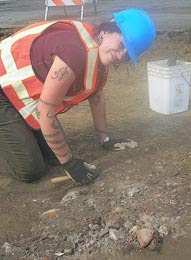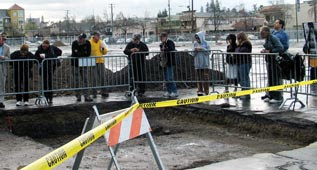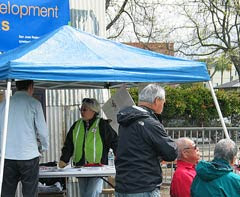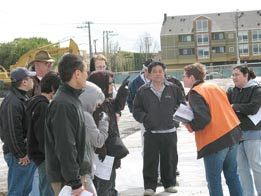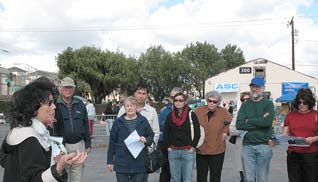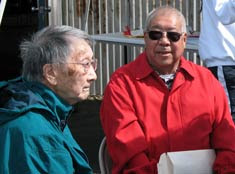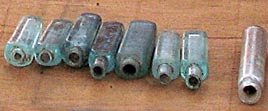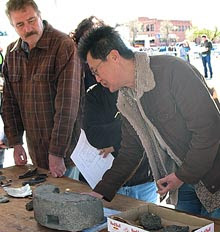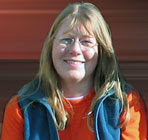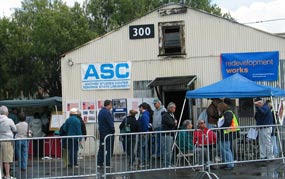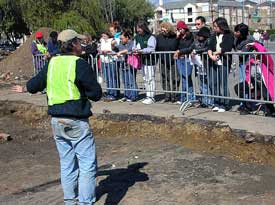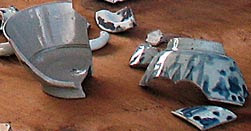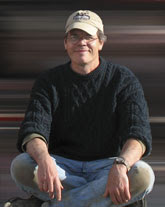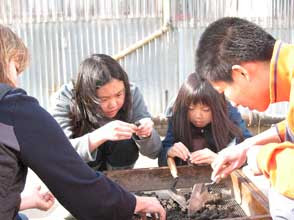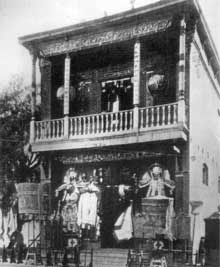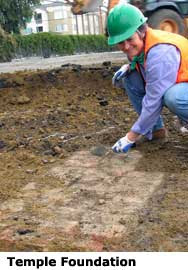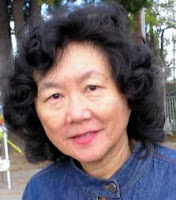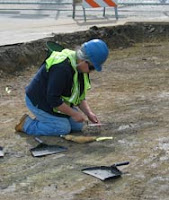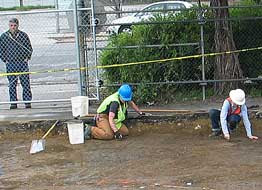 As a first year graduate student in Sonoma State’s Cultural Resources Management masters program, I was thrilled to get the opportunity to participate in the excavations done in San Jose’s Heinlenville Chinatown. As this was my introduction to urban archaeology, I was able to learn a lot about how the pro’s from the ASC approach the archaeology of a large city block- as well as receive a few valuable pointers of the fine art of trowel manipulation!
As a first year graduate student in Sonoma State’s Cultural Resources Management masters program, I was thrilled to get the opportunity to participate in the excavations done in San Jose’s Heinlenville Chinatown. As this was my introduction to urban archaeology, I was able to learn a lot about how the pro’s from the ASC approach the archaeology of a large city block- as well as receive a few valuable pointers of the fine art of trowel manipulation!  Over the week we were able to step back in time as our trusty backhoe driver skillfully peeled back the modern layers of asphalt and gravely fill and revealed the humble traces of the once thriving community of Heinlenville. Although much soil was scraped away during the construction of the recently demolished buildings, we were still left with a map illustrating decades of occupation and use long buried beneath the modern surface.
Over the week we were able to step back in time as our trusty backhoe driver skillfully peeled back the modern layers of asphalt and gravely fill and revealed the humble traces of the once thriving community of Heinlenville. Although much soil was scraped away during the construction of the recently demolished buildings, we were still left with a map illustrating decades of occupation and use long buried beneath the modern surface.
Patches of the original building foundations were neatly preserved, as well as several “robber’s trenches” where the valuable bricks had been removed for re-use after the razing of the buildings. In one pit, one could see the “evolution of the sewer pipe” as evident from the progression from redwood (yes, wood!) sewer lines, to the more familiar terracotta pipes that can still be seen today.
This project not only offered me a chance to learn more about archaeology as a science, but I was able to witness first hand how important archeology is to the community. Long time residents eagerly watched our progress and offered up historical anecdotes, and Connie Young Yu was able to witness the unveiling of her grandfather’s store. After half a century under asphalt, she was able to see and touch the remnants of a place she had heard stories of her whole life.
 I had the good fortune to be enlisted as a tour guide on our “Public Day”, and was able to connect with hundreds of enthusiastic visitors and neighborhood residents interested in the history and archaeology of San Jose’s early Chinese and Japanese populations. People who waited in long lines, braved the rain and cold wind, and yet were still cheery and full of good questions. Although I manned my post as tour guide for five hours straight, the energy and enthusiasm of the participants made my job fun and engaging.
I had the good fortune to be enlisted as a tour guide on our “Public Day”, and was able to connect with hundreds of enthusiastic visitors and neighborhood residents interested in the history and archaeology of San Jose’s early Chinese and Japanese populations. People who waited in long lines, braved the rain and cold wind, and yet were still cheery and full of good questions. Although I manned my post as tour guide for five hours straight, the energy and enthusiasm of the participants made my job fun and engaging.
 At the tail end of the last tour, while overlooking the foundations of Connie Young Yu’s family store, a young boy earnestly asked, “Is that the Great Wall of China?” While the modest brick foundation may not have the illustrious reputation of
At the tail end of the last tour, while overlooking the foundations of Connie Young Yu’s family store, a young boy earnestly asked, “Is that the Great Wall of China?” While the modest brick foundation may not have the illustrious reputation of
I was so happy to have been a part of such a fun and community supported project! The people were interested and friendly, the neighborhood had great food (we particularly loved the Ethiopian restaurant across the street), and everyone enthusiastically shared the common goal of bringing the town of
